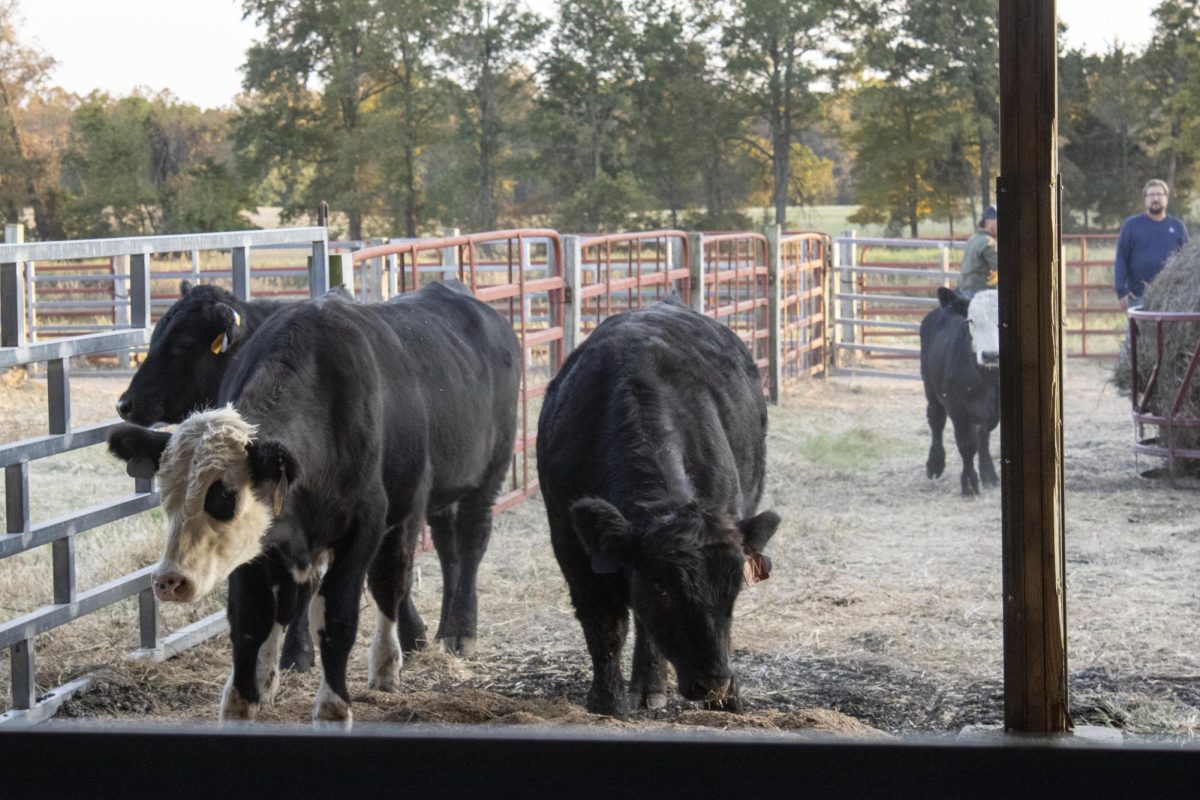Heliophysics, the study of the sun and its impact on the solar system, takes center stage as astronomers prepare for an extraordinary celestial event: the total solar eclipse. As the world awaits this rare spectacle, scientists are at the forefront of researching the sun and its behavior at SIU.
At a time where the sun is garnering more attention, NASA launched its Heliophysics Big Year, a theme that encourages people to participate in as many sun-related activities as possible from Oct. 14, 2023, to Dec. 24, 2024. This theme represents a pivotal moment for the field of heliophysics, bringing together scientists, researchers, and enthusiasts to celebrate the sun and its behavior.
Advertisement
The initiative encompasses a wide range of activities, from research missions to engaging public outreach efforts, all aimed at discovering more about the sun.
Richard Danley, an SIU student who specializes in astrophysics, said, “There’s a large interconnectivity between universities for the Big Year of Heliophysics. I learned recently that Carbondale was one of the few universities that was really emphasizing the big study into the Big Year of Heliophysics, so we’re primarily focusing on the SolarSTEAM and DEB (Dynamic Eclipse Broadcast) initiative projects this year.”
Most of SIU’s heliophysics events will have to do with the eclipse, including telescope feeds, and a science and technology expo. However, other events will continue throughout the year. Celebrations marking solar maximum and updates on the Parker Solar Probe will remain prominent aspects of research. The Parker probe will come closest to the sun, just four million miles away on Dec. 24, according to NASA.
Advertisement*
Danley said, “Pretty much every source of energy you use is derived from the sun in some way or another outside of some things like nuclear power. The more we know about the sun, the more that we are able to understand not just our place on Earth, but how we interact with the environment, what resources we have and how things have changed over time.”
He believes that the research conducted in heliophysics could also serve as a valuable resource in addressing potential challenges that may arise in the future.
“And for our current technology, the more we know about the sun, the more that we can predict things like coronal mass ejections or large solar flares that will affect technology on earth, and we can prepare for that and hopefully keep ourselves from having disastrous events during very, very traumatic events all of a sudden,” Danley said.
Danley will also be leading a team of students in capturing telescope feeds during the eclipse to further enhance our understanding of solar phenomena and contribute valuable data to ongoing research efforts.
He said, “Over the beginning of the fall semester last year, and throughout this semester, I trained students in how to do astrophotography. We would take our telescopes, most of it was testing during the night sky to get them familiar with the equipment, get them familiar with the cameras with the software that we were using, and carry that over to doing solar astronomy.”
Danley said the team was clouded out during the annular eclipse last year, but still got the opportunity to practice and learn new techniques. By gaining practice imaging the sun throughout the last two semesters, these students will now be able to use their newfound skills to capture high-quality images of celestial phenomena. They can both observe and study the sun during the upcoming eclipse and beyond.
“I built up a group that has good experience, and those are the students that will be traveling with me for the eclipse. We’re going to spread out a little bit to make sure that at least someone gets a view, and several students are going to be running the NASA equipment that they’re providing,” Danley said.
During the total solar eclipse the team will be able to see how the sun changes during unique circumstances.
“Overall, the Dynamic Eclipse Broadcast Initiative is to take, hopefully assuming good weather conditions, a continuous stream of the solar eclipse from Mexico to Canada,” Danley said.
This large span of imaging will allow the team to get results regardless of weather or complications.
“In cases of weather, if you can’t see the sun, you can’t see the sun,” Danley said, “sometimes you can increase the exposure, and you can see the sun through the clouds. Telescopes are far better than your eyes, and you can change different qualities of it. But if we’re completely clouded out, we try to get around that by expanding the area that we’re in. From there, hopefully we’ll at least get a glimpse of the Sun sometime during the four minutes that we have in totality.”
Observers of the total solar eclipse will be able to view the corona, a part of the sun that is not normally visible on Earth.
“The corona is not very well understood. It is millions of degrees, which is far hotter than the surface of the Sun, which is what we normally observe,” Danley said.
Even with spaceborne telescopes, the primary focus of most missions is the outer corona or the outer bands, due to the sensitivity and inability to repair equipment once it is in space.
During an eclipse, Danley said, “We are able to see that inner corona that we’re not normally able to observe and that provides us a lot of opportunities to actually understand the interactions between the corona and the very, very upper surface of the sun.”
Other projects at SIU will be using this research to actively engage with the community and contribute to outreach efforts.
“SolarSTEAM, the other part of that project that’s ongoing well after the DEB initiative, is really to emphasize interest and solar astronomy or just astronomy in general,” Danley said.
The project has been a big kickoff point for SIU’s increasing astronomy influence in the past few years.
Last year, Danley embarked on a trip to Australia for its solar eclipse. Joining him were several students from the Study Abroad group, as well as faculty members of SolarSTEAM, who were already acquainted with the equipment. Together, they engaged in a practice session, putting their equipment to the test in a real-life situation. This experience allowed them to determine the most effective techniques to use during the 2024 eclipse.
“It was really a good time to get familiar with our equipment. And when we got there, we imaged the eclipse. We had a few hiccups, the eclipse time for Australia was between 48 and 54 seconds, which is a little bit different than four minutes and four seconds. So any errors that we had, we were just going to have to deal with them,” Danley said.
Along with this research and imaging, NASA is urging people across the U.S. to take as many pictures of the sun during the eclipse as possible. They hope to use the additional data to determine more information about the sun.
Danley said, “People and universities play a big part in this eclipse, because you’re going to have so many telescopes pointed at the sky at a time, and the more telescopes, the more observers that you have viewing, the more information you’re going to get.”
He said he has an absolute love of astronomy and astrophysics and really enjoys doing the imaging, taking the data and getting to work with interesting people on projects. Because of this passion, he hopes others will take the opportunity to take part and learn more in the process.
“Really, if anybody has any interest in the sun, they should…read our [academic] papers, they can see how we’ve gotten involved with it. Everybody should be really encouraged to just kind of research the sun a little bit again, it’s really one of the most important things in our lives,” Danley said.
Advertisement

















![Scott Hamilton, a part of the SIU research team, shows Zachary Gutenkauf and Jennifer Pierce supplies they will be using during their NASA research in the Life Science III building at SIU Nov. 8, 2021 in Carbondale, Illinois. “There are three phases to the overall competition Phase One is basically to show that your idea has merit. Phase Two is to show that all pieces of the idea work and construct each one [idea] and Phase Three is to integrate them into one continuous device,” professor in geology, Ken B. Anderson said.](https://dailyegyptian.com/wp-content/uploads/2021/11/NASAresearch3-900x710.jpg)




